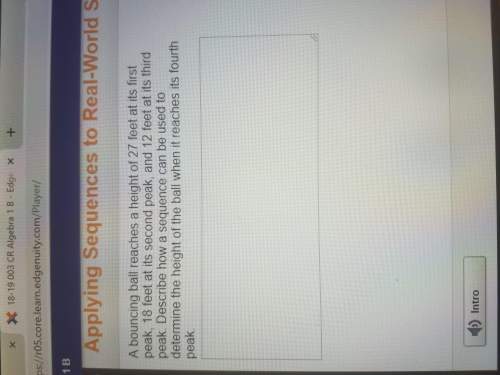
Mathematics, 03.01.2020 03:31 Dweath50
Let g be a function that is defined for all x, x≠2, such that g(3)=4 and the derivative of g is g′(x)=
x^2–16/x-2, with x ≠ 2.
1. find all values of x where the graph of g has a critical value.
2. for each critical value, state whether the graph of g has a local maximum, local minimum or neither. you must justify your answers with a complete sentence.
3. on what intervals is the graph of g concave down? justify your answer.
4. write an equation for the tangent line to the graph of g at the point where x=3
5. does this tangent line lie above or below the graph at this point? justify your answer.

Answers: 3


Another question on Mathematics

Mathematics, 21.06.2019 15:00
If x = ∛200, which of the following inequalities is true? * 2 < x < 4 3 < x < 5 6 < x < 6.5 4.5 < x < 5.5 5 < x < 6
Answers: 1

Mathematics, 21.06.2019 17:00
Find an equation for the linear function which has slope -10 and x-intercept -7
Answers: 1

Mathematics, 21.06.2019 21:40
Which of the following best describes the graph below? + + 2 + 3 + 4 1 o a. it is not a function. o b. it is a one-to-one function. o c. it is a many-to-one function. o d. it is a function, but it is not one-to-one.
Answers: 3

Mathematics, 21.06.2019 22:00
Rewrite so the subject can be y in the formula d=m-y/y+n
Answers: 1
You know the right answer?
Let g be a function that is defined for all x, x≠2, such that g(3)=4 and the derivative of g is g′(x...
Questions


Chemistry, 01.07.2020 15:01


Physics, 01.07.2020 15:01


Mathematics, 01.07.2020 15:01






Physics, 01.07.2020 15:01











